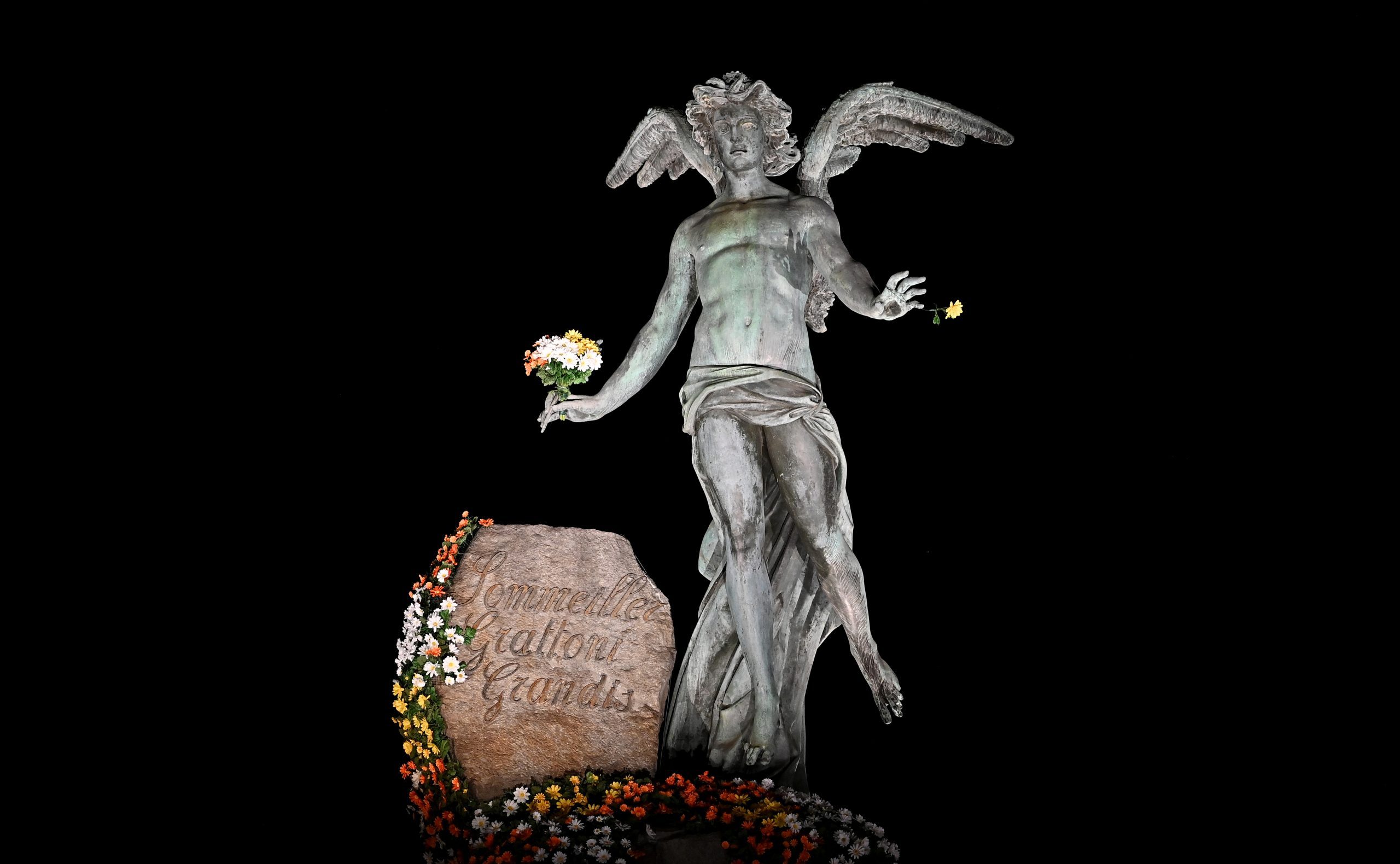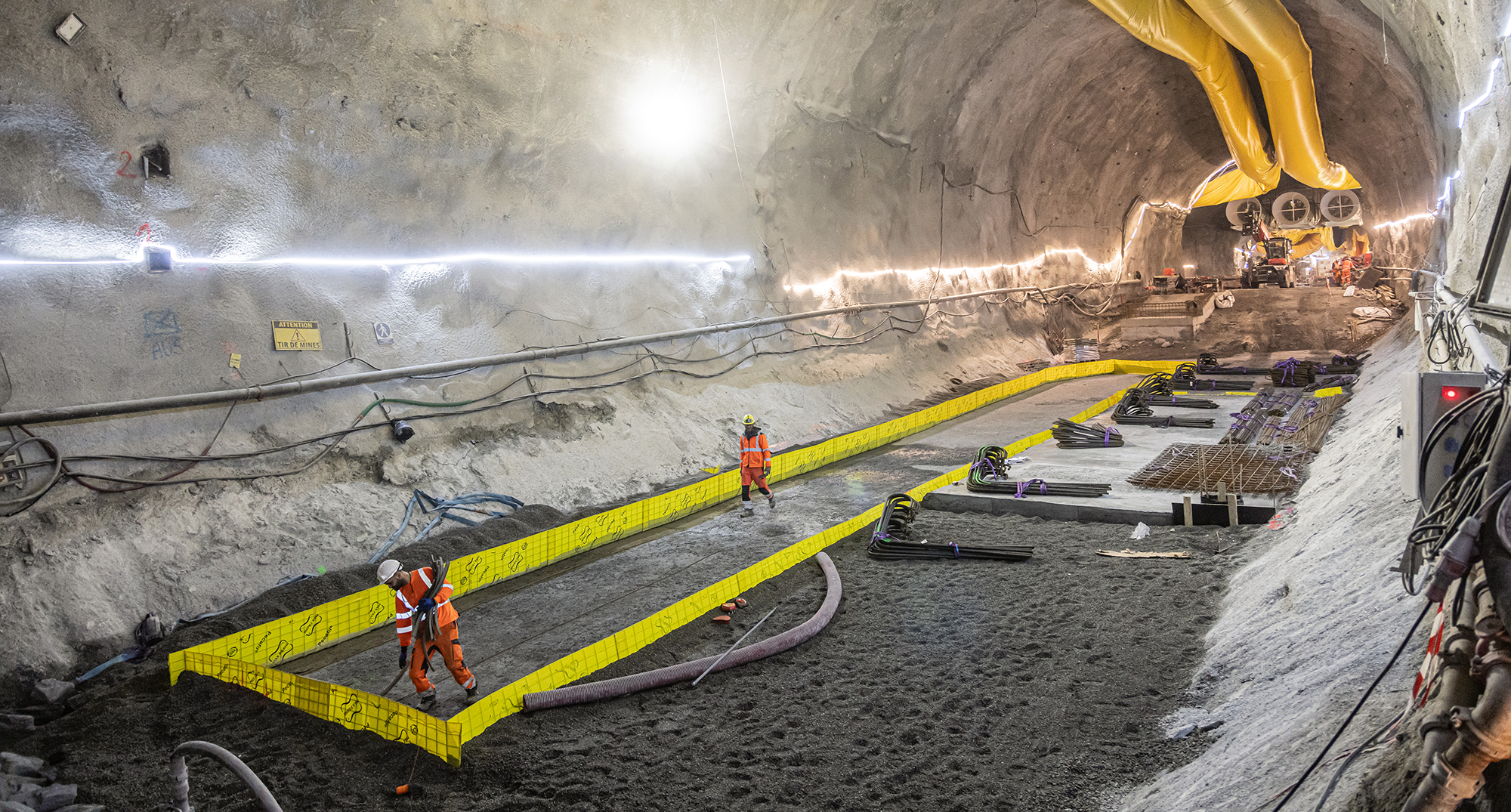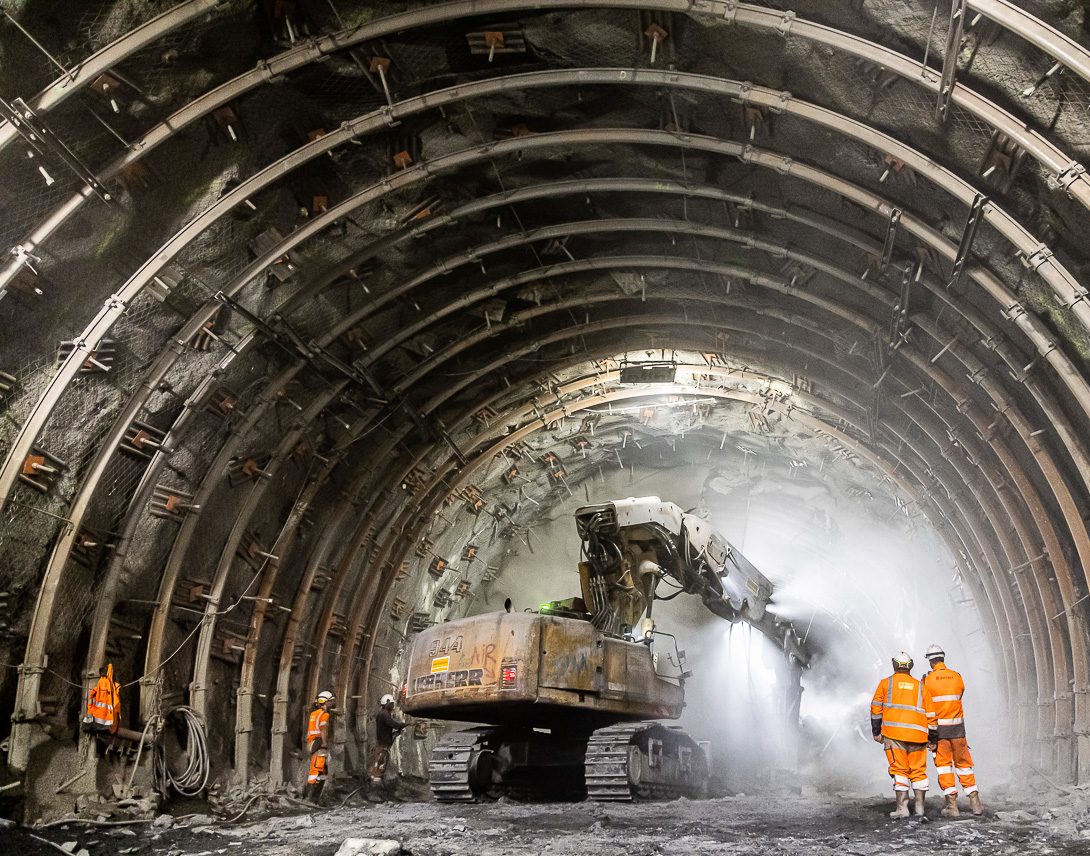The project
A blanket of daisies appears on the pyramid of rocks in which seven Titans are trapped, symbols of the strength and harshness of nature. They reach out towards the winged Genius of progress who, at the top, clasps a bunch of flowers in one hand and throws a bloom with the other.
The TRAIFIORI DEL FRÉJUS project conceived by Turin-based artist Richi Ferrero together with Carmelo Giammello, reinterprets progress in a contemporary key, evoking the pacification needed between technology and nature to deliver sustainable works for the future. In the evening, the more than 15,000 daisies change colour thanks to a play of light around the fountain and, as one draws closer, one can hear the sounds curated by Roberto “Tax” Farano.
The inauguration
The installation was inaugurated with a ceremony in Piazza Statuto at 10.15 p.m. on Sunday 5 September on the occasion of the first Italian leg of the Connecting Europe Express, the train promoting rail transport that is visiting 40 European cities. On board was the European coordinator of the Mediterranean Corridor, Iveta Radičová, who arrived from Chambéry and was welcomed by the regional councillor for heritage Andrea Tronzano and the deputy mayor of Turin Sonia Schellino.
The Fréjus epic and the commemorative monument
The excavation of the Fréjus tunnel was decided in 1857 by the Kingdom of Sardinia at the behest of Cavour. The new railway link was inaugurated by the Italian State 10 years after the unification of the country, on 17 September 1871. The work lasted just 14 years thanks to the extensive use of the new compressed air drilling machines just patented by Sommeiller. The extent of the changes brought about by the Fréjus tunnel, the longest running of the Alpine railway tunnels still in operation, was enormous: it represented a titanic challenge from an engineering and financial point of view, and its completion is a testament to the human skills and spirit of the time.
In memory of that undertaking, the monument in Piazza Statuto, made from rocks from the excavation of the tunnel, bears the names of the engineers who designed and directed the work on the tunnel: ‘Sommeiller, Grattoni, Grandis’. The monument, which was the brainchild of Count Marcello Panissera di Veglio, president of the Accademia delle Belle Arti di Torino, was supported and financed by all the workers’ societies of Italy and realised under the artistic guidance of Odoardo Tabacchi and the leading role of Luigi Belli.
The success of the initiative
Richi Ferrero‘s installation, which will remain in place until 18 October and has been photographed and posted on social networks more than 3,000 times, was created under the patronage of the Piedmont Region and the City of Turin and with the collaboration of the Soprintendenza Archeologia Belle Arti e Paesaggio di Torino, TELT, GTT, IREN, Accademia Albertina di Belle Arti and the Museo Nazionale del Risorgimento. Once the flowers have been removed, the monument will be restored. The daisies will then find a new artistic life at Rivalta di Torino: they will be donated to Ecovolontari Rivaltesi Onlus the Ecovolontari Rivaltesi Onlus, who will use them as an ‘educational message of beauty’, to resolve some situations of urban decay.



